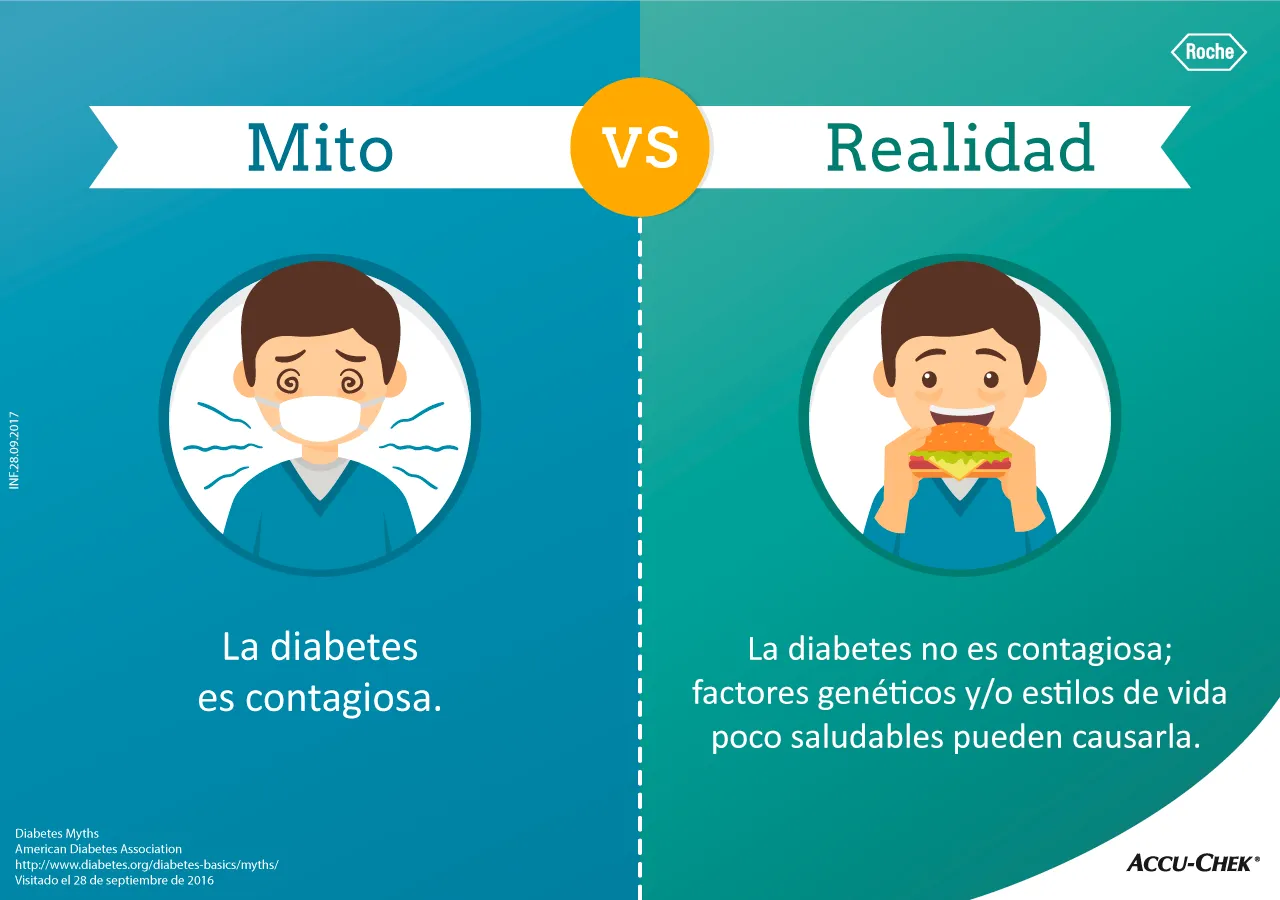More than 37 million adults in the United States suffer from diabetes and, from them, 1 in 5 is not aware of this, according to the centers for disease control and prevention (CDC).
This chronic disease, which affects the way the body turns food into energy, arises from insufficient insulin production (a hormone that allows blood sugar to pass to cells) by the pancreas or by inefficiencywith which the organism uses it.
The effect of non -controlled diabetes is hyperglycemia (increased blood sugar), which can cause heart damage, blood vessels, eyes, kidneys and nerves.Here are some misinformation and myths related to this disease.
types of diabetes
It is important to keep in mind that there are mainly 2 kinds of diabetes: type 1 and type 2.
Type 1 diabetes occurs when the body does not generate insulin (or, if it does, it is in an insufficient amount).It is not known exactly why it appears, but it is known that there are genetic, immune and environmental factors that predispose to have the disorder.It is more common to develop it before the age of 30 and their patients have a dependence on insulin, so they need to administer it.
Type 2 diabetes, the majority in the world, occurs when the body develops a greater resistance to insulin.The main factor that favors its appearance is lifestyle (an excessive food intake, unhealthy diet, overweight, obesity, smoking and little physical activity), although the hereditary factor also matters.It is more frequent to develop it after 30 years and, although it may be necessary in some cases, it does not always force the patient to administer insulin, since there are other treatments available.
There are also other types of diabetes with less prevalence than the previous ones, such as gestational, which appears in pregnancy and affects how cells use glucose during pregnancy;The mody, with similar characteristics to type 2, but in younger population associated with genetic alterations;Or prediabetes, when blood glucose levels are higher than normal and begin to generate damage to the body, but not high enough to give a diagnosis of diabetes.
Why diabetes affects Hispanics or Latinos: Genetics, Food, Weight and Activity
There are certain populations with the greatest probability of presenting prediabetes and diabetes type 2, according to CDCs.The agency indicates that, in general, adults in the United States have a 40% probability of suffering from type 2 diabetes throughout their lives.But this figure increases to 50% in the case of Hispanics or Latinos.
The complications of this disease also affect this group "more strongly".As CDC indicates, Hispanics or Latinos have higher rates of renal failure, as well as blindness and loss of diabetes related.
But why do these people have an increased risk of experiencing type 2 diabetes and some complications?Among the factors that can influence, CDCs mention genetics, food, weight and activity.
The agency suggests that Hispanics or Latinos could have genes that increase their chances of presenting type 2 diabetes. To this it is added that in some cultures, "meals can have a high content of fat and calories."
"In addition, family celebrations can involve social pressure to eat in excess, and refusing to eat something could be interpreted as being discortive," says the CDC.There are also those who “consider overweight as a sign of health instead of a problem ofhealth".
However, as CDC recognizes, it is important to keep in mind that these risk factors are general and may not apply to Hispanic or Latin people individually or to specific Hispanic or Latin groups.
weight is not the only risk factor for type 2 diabetes
There is the false belief that only overweight people can develop type 2 diabetes. While it is true that it is a risk factor, it is not the only one.The American Diabetes Association (ADA) explains that other factors also influence, such as the amount of physical activity it performs, the family history, ethnic origin and age.
"Unfortunately, many people think that weight is the only risk factor for type 2 diabetes, but many people with this disease have a normal weight or a moderate overweight," says the organism.
people with diabetes do not need to eat special food
The ADA insists that people with diabetes do not need to eat special foods.There are some that come packaged and say they are "suitable for diabetics."But, according to the association, they can raise blood glucose levels, be more expensive and contain sugar alcohols with a possible laxative effect.
A healthy eating plan for people with diabetes is usually the same as that of someone who does not suffer from this disease, says the ADA.In general, "it will include many starchy vegetables, it will limit added sugars, change cereals refined by integral and prioritize comprehensive foods over highly processed when possible."
CDC say that "handling blood sugar level is the key to living well when you have diabetes."Therefore, a person with this disease must eat healthy foods in the correct amounts and at the corresponding time.Therefore, the most advisable thing is that you set certain guidelines with a nutritionist.
There is no evidence that people with diabetes should avoid carbohydrates
Although some people with diabetes avoid carbohydrates in their diet, there is no scientific evidence to do so beneficial, according to the ADA.In fact, "including the correct amounts of carbohydrates, proteins and fats can help control blood glucose levels."
But then, how much carbohydrates should a person with diabetes eat?There is no unique answer that is valid for everyone, since each body is different.CDC explain that, on average, about 45% of the calories consumed by people with diabetes must come from carbohydrates.But we must bear in mind that the amounts depend on age, weight, activity level and medications that are taken.Ideally, as we have said previously, it would be to consult it with a nutritionist.
neither diabetes can be infected or those who suffer are more likely to get diseases
It is not true that diabetes can be infected through sexual contact, saliva or blood."Although we don't know exactly why some people develop diabetes and others do not know that it is not contagious," they say from the ADA.
As this organization stands out, there is also no evidence that people with diabetes have more chances of cold or contracting another disease.But, if they get flu, they can develop serious complications.Therefore, the ADA advises them to vaccinate against this disease.
diabetes cannot be cured, but it is possible to prevent it and delay it
Diabetes is a chronic disease (except in the case of gestational diabetes).This means that, today, noThere is a cure.
However, in some cases you can talk about remission of type 2 diabetes, as Dr. Mauricio González (Dr. Mau (Mau in his networks), specialized in internal medicine, emergencies and obesity explains on Instagram.The expert refers to the Direct Study, published in 2017 in The Lancet magazine.This work showed that if significant weight loss was achieved, it was possible to send the disease and get rid of drugs.
Ambrish Mithal, president of Endocrinology and Diabetes of Max Healthcare, points out that "we must remember that we are talking about remission and not reversion because reversal implies that it is permanent."“It is possible that some of these people remain in remission, but some can see the diabetes return.At present there are not enough data to ensure that people will remain in a non -diabetic state permanently, ”he explains to The Economic Times.*
Diabetes can also be treated, living with it limiting its repercussions on health and, in many cases, prevent or delay its appearance, according to Medline Plus, the National Library of Medicine of the United States.
To prevent the disease, it is advisable, red and processed meats and unhealthy fats.




